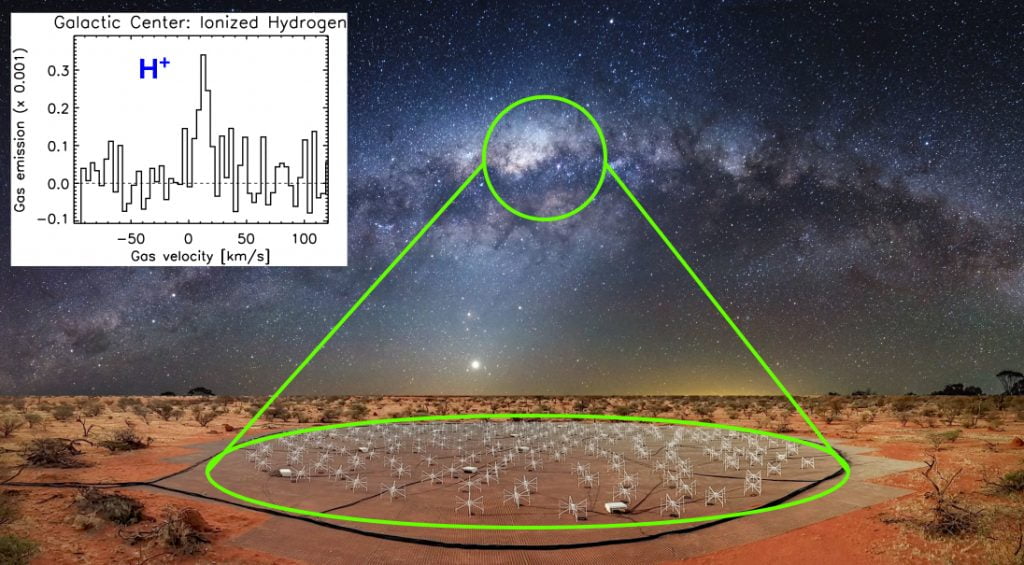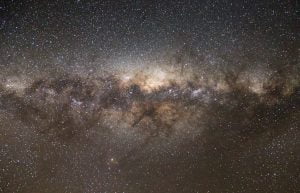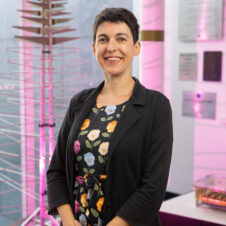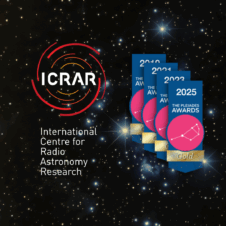PRESS RELEASE ASTRON – Netherlands Institute for Radio Astronomy
———————————————————————————————-
For the first time ionised hydrogen has been detected at the lowest frequency ever towards the centre of our galaxy. The findings originate from a cloud that is both very cold (around -230 degrees Celsius) and also ionised, something that has never been detected before. This discovery may help to explain why stars don’t form as quickly as they theoretically could.
Dr. Raymond Oonk of ASTRON, Leiden Observatory and SURFsara led the study which is published today in the Monthly Notices of the Royal Astronomical Society.
“The possible existence of cold ionised gas had been hinted at in previous work, but this is the first time we clearly see it,” he said.
Ionisation is an energetic process that strips electrons away from atoms. The atom will become electrically charged and can then be called an ion. This typically happens in gas that is very hot (10000 degrees Celsius) and where atoms can easily lose their electrons. It was therefore puzzling to discover the ionised hydrogen from very cold gas in this cloud. Normal energy sources, such as photons from massive stars, would not cause this. More exotic energy forms, such as high energy particles created in supernova shockwaves and near black holes, are more likely to be responsible.
“This discovery shows that the energy needed to ionise hydrogen atoms can penetrate deep into cold clouds. Such cold clouds are believed to be the fuel from which new stars are born,” said Dr. Oonk.
“However, in our galaxy we know that the stellar birth rate is very low, much lower than naively expected. Perhaps the energy observed here acts as a stabiliser for cold clouds, thereby preventing them from collapsing on to themselves and forming new stars.”

A composite image showing our galaxy, the Milky Way, rising above the Engineering Development Array at the Murchison Radio-astronomy Observatory in Western Australia. The location of the centre of our galaxy is highlighted alongside the ionised hydrogen (H+) signal detected from this region of sky. The white-blueish light shows the stars making up the Milky Way and the dark patches obscuring this light shows the cold gas that is interspersed between them. Credit: Engineering Development Array image courtesy of ICRAR. Milky Way image courtesy of Sandino Pusta.
The observation was made with the Engineering Development Array (EDA), a prototype station of the Square Kilometre Array (SKA) which will be the worlds’ largest radio telescope when it’s built in the next decade.
A/Prof. Randall Wayth from the Curtin University node of ICRAR said the detection was made possible by the wide bandwidth of the EDA and the extremely radio quiet location of the Murchison Radio-astronomy Observatory.
“The low frequency portion of the Square Kilometre Array will be built at this location in the coming years, so this excellent result gives us a glimpse of what the SKA will be capable of once it’s built,” he said.
The data reduction was led by Emma Alexander (University of Manchester) as part of her summer student internship at ASTRON.
“It’s a very exciting time to be coming into radio astronomy, and it was great to work on the first high resolution spectroscopic data from this SKA prototype station. The technologies that are being developed for the SKA, and the science results that come from them, will be a driving force for my generation of radio astronomers,” said Alexander.
The Engineering Development Array (EDA) is a separate telescope designed and built by Curtin University. It is a single field-node of 256 antennas, replicating the proposed antenna layout of the SKA-low field nodes, but using Murchison Widefield Array (MWA) dipole antennas. Data taken from the EDA is compared and correlated against the MWA. As the MWA antennas have already been thoroughly characterised, the EDA helps us understand how a larger group of randomly spread antennas can be expected to perform in the given layout. Credit ICRAR.
This work was carried out as a collaboration between the Netherlands Institute for Radio Astronomy (ASTRON), Leiden University, the International Centre for Radio Astronomy Research (ICRAR), University of Manchester and the Square Kilometre Array.
ASTRON
The Netherlands Institute for Radio Astronomy, better known as ASTRON, is a leading institute for radio astronomy development.
ASTRON’s programme has three principal elements:
- The operation of front line observing facilities, including especially the Westerbork Synthesis Radio Telescope and LOFAR,
- The pursuit of fundamental astronomical research using ASTRON facilities, together with a broad range of other telescopes around the world and space-borne instruments (e.g. Sptizer, HST etc.)
- A strong technology development programme, encompassing both innovative instrumentation for existing telescopes and the new technologies needed for future facilities.
In addition, ASTRON is active in the international science policy arena and is one of the leaders in the international SKA project
ICRAR
The International Centre for Radio Astronomy Research (ICRAR) is a joint venture between Curtin University and The University of Western Australia with support and funding from the State Government of Western Australia.
Original Publication:
‘Spectroscopy with the Engineering Development Array: cold H+ at 63 MHz towards the Galactic Centre’, published in the Monthly Notices of the Royal Astronomical Society on July 9th, 2019.
Contacts:
Alice Spruit — ASTRON
E: spruit@astron.nl Ph: +31 521 595 208
Dr Randall Wayth — ICRAR / Curtin University
Pete Wheeler — Media Contact, ICRAR
E: Pete.Wheeler@icrar.org Ph: +61 423 982 018


